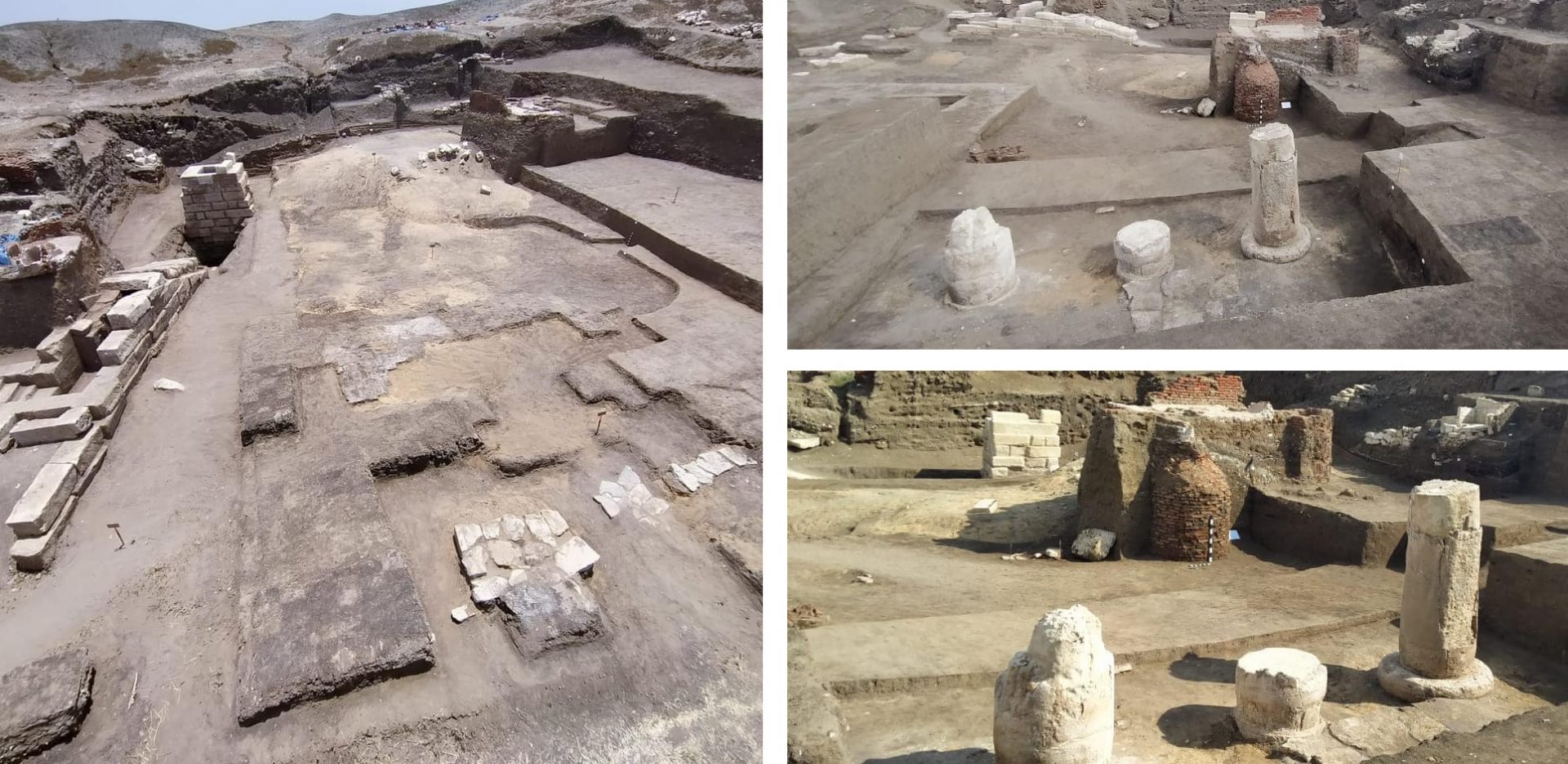Archaeologists have uncovered ancient temple remains during excavations at Tell El Fara’in (“Hill of the Pharaohs”), located in the Kafr El Sheikh Governorate, Egypt.
Tell El Fara’in was an Ancient Egyptian city, constructed between the Taly (Bolbitine) and Thermuthiac (Sebennytic) branches of the Nile, a few kilometres north of the east-west Butic River on the southern shore of the Butic Lake.
The city became a sacred site in dedication to the goddess Wadjet, the matron and protector of Lower Egypt, and upon unification with Upper Egypt, the joint protector and patron of all of Egypt.
Wadjet was often depicted as a cobra, later being shown coiled upon the head of Ra. In dedication to her as a protector deity, Tell El Fara’in was named Per-Wadjet by the Ancient Egyptians, and later Buto (also meaning Wadjet) by the Ancient Greeks. The city was famous for its sacred temple and sanctuary to Wadjet, with the wider temple complex extending over an area of 11 acres.
Excavations over an area of 6.5m x 4.5m by a team of Egyptian archaeologists, have uncovered the remains of an ancient hall lined with pillars within the larger temple structure. The hall contains the remains of three surviving columns, aligned on a north-south axis at the southwestern end of the temple.
The team also found a number of stone fragments decorated with engravings, as well as numerous ceramics and pottery associated with ritual activity. In a press release issued by the Ministry of Tourism and Antiquities, archaeologists also found a limestone painting with the representation of a bird’s head wearing a white crown surrounded by feathers.
Ministry of Tourism and Antiquities







